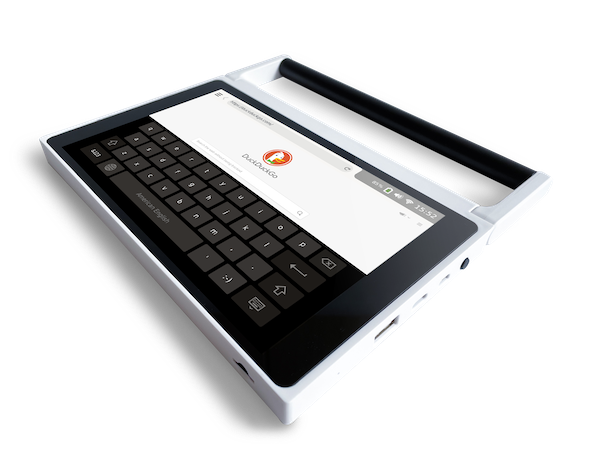An Engineer's DIY Computers with Alternative Form Factors
Not bad for a guy with no ID background!
I didn't know you could order off-the-shelf circular LCD screens. I also didn't realize that in sci-fi videogames, it's not uncommon to see computers with circular screens. (I'm not a gamer and have no idea what games these screenshots are from.)



In any case, Berlin-based engineer Penk Chen knew both of these things, and had the skills to do something about it:
As mentioned in the Tweet, all of his open-source build details are here.






This isn't the first computer with an unusual form factor that Chen's built. His Penkesu Computer is "a retro-style handheld device powered by a Raspberry Pi Zero 2 W [with] a 7.9 inch widescreen display (1280 x 400 resolution), and a 48-key ortholinear mechanical keyboard."











And his CutiePi Tablet, which he's planning to sell (though it's also open-source) features "an 8-inch multi-touch screen, a 5000 mAh battery, and the Raspberry Pi Compute Module 4."




I'm pretty impressed with the housings, which Chen designed and 3D printed himself. For a guy who doesn't have any background in ID, I think he's done an admirable job with the cases for all three machines.
-
oFavorite This
-
Q1Comment
K
{Welcome
Create a Core77 Account
Already have an account? Sign In
By creating a Core77 account you confirm that you accept the Terms of Use
K
Reset Password
Please enter your email and we will send an email to reset your password.


Comments
Rain. C'mon with the "for a guy without ID background" line! Please understand, I get that this is a design focused site. There are literally tons of articles that even you have posted that discuss items and products that are well designed by non-designers. There are equally many articles of items poorly designed by those with a formal background in ID. I am sure that I am not the only engineer here "with no background in ID" that saw this and had a very hard eye roll.
How about some content to clarify why you think his work is admirable? I will start:
- I like how the first circular screen case, like the inspiration images, has a visual heft, which gives space for open source components and also allows for the generous wrapping fillets. One thing that could really make it pop a bit more would be to use C2 or C3 curves, particularly for the back cover, so the termination at the flat back face isn't so striking.
- The square case is a great example of well done screen shrouding that resolves well with the hinge form and reduces the thickness of the case around the keyboard. The design looks to be going for a rugged, utilitarian computer vibe, so one thought would be to use an aftermarket key cover with a bezel to protect the keys from grease and dust. Utilization of screw bosses that work well for 3d printing but not injection molding around the keyboard allow him to shrink the form factor to fit snugly to the keyboard. I especially like the screen ribbon panel and how it is incorporated into the chunky hinge form well.
The cutiepi tablet is a good progression from his other work in form and function, and a hard-case version of common kids tablet cases where the carry handle is the kickstand.